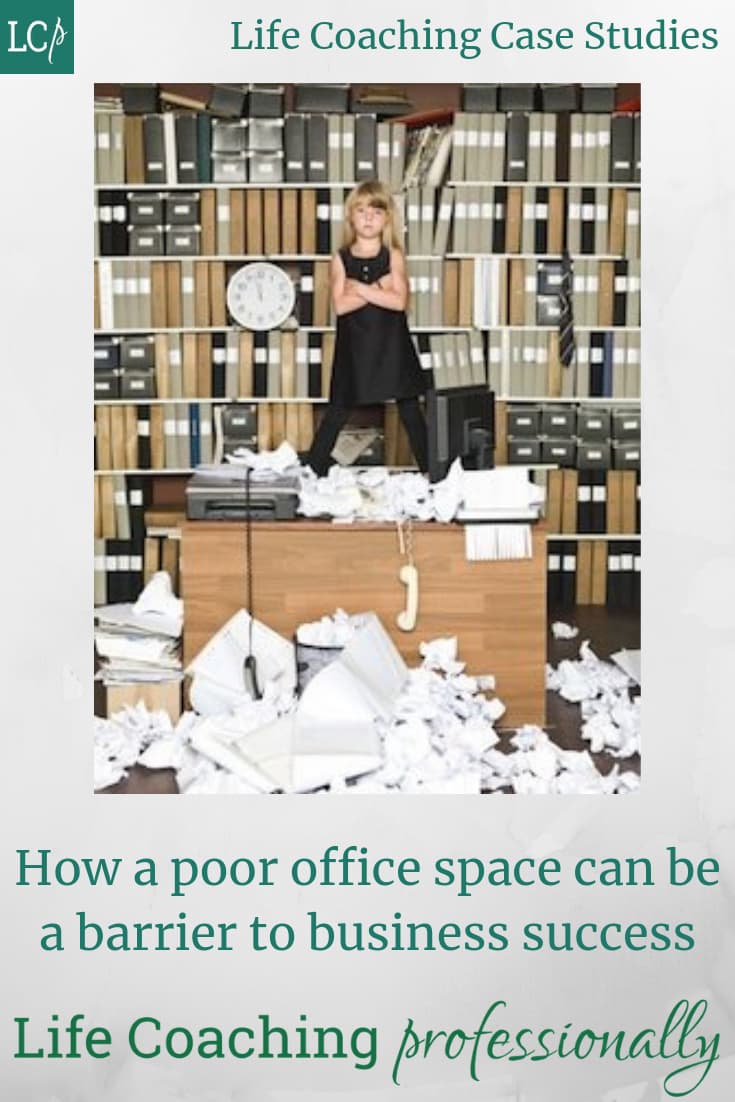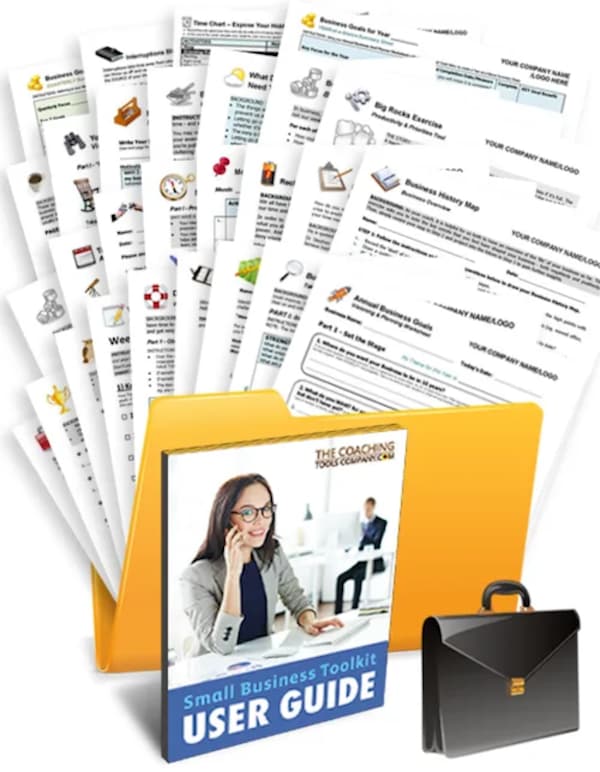Click here to subscribe to my free fortnightly Life Coaching Accelerators, for insider coaching tips.
Wendy Buckingham / Creator, Life Coaching Professionally
- Life Coaching
- Discover Your Niche
- Case Studies
Business Coaching Case Studies
Page Summary
These business coaching case study examples from my files are about small business owners who came to coaching because they were either stuck in overwhelm and stress, or uncertain about how to grow their businesses. With life coaching as well as business direction help they found a clear path to business success as well as work and personal satisfaction.
*Names have been changed to protect confidentiality and privacy.
Quick Links
FYI: I may receive commissions at no cost to you. Please see my affiliate disclosure for more.
John's Business Was Going Well But He Wasn't!
John had started his engineering business a few years ago and now had as much work as he could handle. On paper, the business was a success.
But John was exhausted, working long hours, taking work home and generally bogged down in the business. He had become stressed, bored and unmotivated.

At the suggestion of his wife, he decided to get some life and business coaching to help him get out of this overwhelm and back to the family life and hobbies he used to enjoy.
John was suffering from the trap many small business people fall into - they think they have to do everything (or almost everything) themselves to get it right.
He had taken on one staff member (Allan) to help in the office and take the pressure off him but was still doing all the quotes and dealing with contractors himself.
John was reluctant to appoint to make his one staff member project manager because he wasn’t sure he was the right person for the job.
In our first session John acknowledged his work and life balance was way out of kilter and he wasn’t spending enough time with his wife or two young children and had let go of activities he used to enjoy both for himself and with them.
Coaching Breakthrough: John started to work more ON his business rather than IN it
With life coaching, John realised he had to step back from the “doingness” of the business and start looking forward to clarify where he wanted the business to be in five years and then 10 years time, when he would like to retire. Then we talked about what we needed to do to achieve that.
One of the things John realised was that he needed to let go of his fear of delegation (in case it didn't work out), if ever he was to get out of the overwhelm he was in and move forward.
The first step was to give his Allen more responsibility as project manager to see how that would work and, for his own peace of mine, to make sure he kept checking in with him on how it was going. He also asked Allen to start creating an operations manual, so that if he left the company at any time, John wouldn’t have to start training someone else from scratch.
John also had a son who he was hoping would take over the business from him when the time came to retire. But he hadn’t got around to talking to him about this succession plan.
He resolved to do this and fortunately the son was very willing to enter the business and learn the ropes to see if he could commit to taking it over when the time came.
We also made a list of all the jobs John was doing in the running of the business to see what could be delegated. John started accepting that employing more staff or outsourcing some of these tasks, was not a drain on the business finances but could be viewed as an investment in the future.
By the end of our coaching series John was feeling more positive and in control and with renewed motivation to grow the business. Even better, he was able to spend more time with his family.
If a business coaching client acknowledges it is time to make some changes to make their business work better but are not sure what to do, help them identify what needs to happen, and make a plan and take the fear and uncertainty out of moving forward with confidence.
How Out-sourcing Saved Fran's New Business From Failure
Francis decided to give up a well paid senior corporate marketing career to follow her dream to create her own business around a unique and stylish range of fashion accessories. She came to me for coaching about how to transition from the corporate world to the world of small business.
One of the first things we had to address was that Francis no longer had a multitude of departments available at the press of a button to use as a resource or pass things on to. f She would have sole responsibility for designing, manufacturing, marketing, administration, accounts and distribution.
Francis just didn’t know where to start.
I got her to do a SWOT Analysis (Strengths, Weaknesses, Opportunities and Threats) The strengths, of course, were designing and marketing. On the weakness side were manufacturing setting up and keeping accounting records and distribution of her products of which she had no experience.
The opportunities were good. Plenty of people had told her they loved her designs and she had even had interest from a buyer for a large department store.
One of the main challenges and threats was distribution. Although she might have a great product, no efficient distribution channels meant her products could end up just sitting in her garage. A weakness was that record keeping and accounting were not something she was good at or enjoyed doing which tied.
Coaching Breakthrough: Francis concentrated on what she was good at
Although Francis was starting small by working from home, she realised she still had to think big and outsource what were not her forte, so she could concentrate on what would be the lifeblood of her business - innovative design, marketing and good customer service.
So, right from the planning stage, she started creating a team to support her business. Her accountant recommended a bookkeeper who would set up and maintain her business systems. She found a factory where she could get her designs manufactured and she sourced a distributor of fashion accessories who was enthusiastic about her designs.
With all this in place, she could now get down to her strengths, that all important design work, and develop her marketing strategy.
Without coaching, Francis may just have ended up with a pile of unsold accessories, a shoebox full of paperwork and exhaustion.
When a client comes to you wanted to start up their own business it's a good idea to get them to work their way through a SWOT analysis to identify where they need to focus their attention and what is not a good use of their time.
Tools To Enhance Your Small Business Coaching
31 separate products included
This Small Business Coaching Toolkit contains 31 forms and exercises. It includes:
- visioning and strategy tools
- exercises to set goals, take action and track progress
- worksheets to increase productivity and personal effectiveness
- forms to help our harried business owners de-stress and create more balance.
If your interest is in coaching small business owners, this is for you. Discover more...
As well as templates for business coaching which you can personally adapt and brand for your coaching practice The Coaching Tools Company has templates and forms for everything from a time saving Welcome Pack to helpful aids for Life, Career and Time Management.
If you don't want the full kits, many of items can be purchased separately.
I also recommended John to read The E-Myth Revisited by Michael Gerber. It's a book that really sets out why most small business fail and what to do about it. And usually it has nothing to do with the running of the business rather the blindspots of the business owner. It's a great coaching resource to have on your shelf for small business coaching clients.
Marian's Dysfunctional Home Office Was Holding Her Back

Marian is an experienced event organiser with good contacts. She had decided to go out on her own but was struggling to get new clients for her new home based business. We had our first session at her place so I could get a feel for her business. Marian had set her "office" up in the corner of her living room and although she had all the right equipment, it was cramped and messy.
The first thing I did was to get Marian to make a list of all the things she was putting up with in her office space, what she was tolerating, and what frustrated her and took her energy. To her surprise and, in fact horror, she realised she was putting up with a lot.
She was tolerating glare from the morning sun on her computer. Her desk that was too small and was often messy. There was paperwork in boxes and nowhere comfortable to sit when she was on long conference calls. She also felt she could never really "go home" from work.
No wonder her productivity and ability to get new projects was suffering!
Coaching Breakthrough: Marian set up her office properly
As her daughter had recently moved out, instead of keeping her bedroom for rare visits, Marian moved the office into that room and created a proper workable office with a sofa bed for visitors.
She immediately had space for a bigger desk and an armchair, and she could position the computer so it had no glare. Now that she didn't have to worry about her living room looking "officey" she invested in a proper filing cabinet
Her living room was once again a work-free space to come home to.
It was no coincidence that, once she had handled all this, her energy, productivity and income started to increase significantly.
It's often the less obvious things that can be holding a client back from moving forward in their business. They may say they just need to find a way to make more sales, but always try and go deeper and look at the big picture of their operations - such as in this case study example, their working environment.
How To Write A Business Coaching Case Study
I hope these case studies have given you some strategies to use in your own business coaching.
As a life and business coach, you may want to showcase your successes on your website as I have done here. I developed a simple format for all my case studies that takes the reader on the coaching journey. It goes like this as you can see from my examples above.
- Describe situation the client is in when they came to you.
- Tell how you coached them get to the core issues they needed to address
- Share breakthrough they had from your coaching and what actions they took
- Remember to change names to protect client confidentiality
- End with a short summary of how your coaching worked (optional)
- Life Coaching
- Marketing Ideas
- Case Studies




